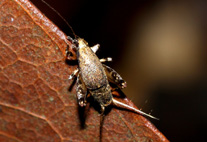Abstract
A new species of the Gekko japonicus group is described from Khammouane Province, central Laos, based on distinct morphological and molecular features. Gekko thakhekensis sp. nov. is distinguished from the remaining congeners by a combination of the following characters: size moderate (SVL 67.6–79.2 mm); nares in contact with rostral; internasals absent; postmentals enlarged; interorbital scales between anterior corners of the eyes 22–26; dorsal tubercles absent; ventral scales between mental and cloacal slit 165–174; midbody scale rows 110–116; ventral scale rows 32–40; subdigital lamellae on first toe 11–13, on fourth toe 14–15; finger and toe webbing present at base, about one fifth of length of digits; tubercles on upper surface of fore and hind limbs absent; precloacal pores 1–5 in males; postcloacal tubercles two; tubercles absent on dorsal surface of tail base; subcaudals enlarged; dorsal surface of body with greyish brown blotches. In molecular analyses, the new species is recovered as a sister taxon to G. scientiadventura, but the two species are separated by approximately 12% divergence as shown by the partial mitochondrial ND2 gene.

